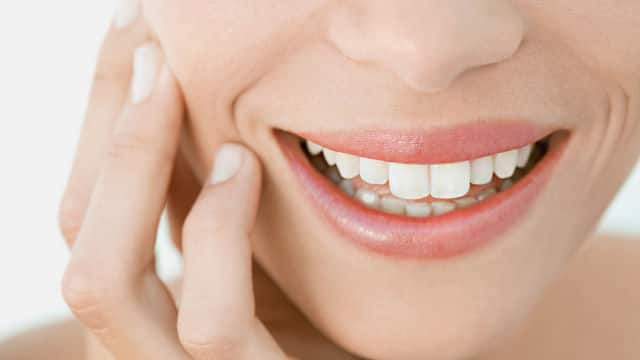Keeping teeth clean while undergoing an orthodontic treatment plan can be challenging, so many patients with braces consider special whitening methods. Knowing how to whiten teeth with braces isn't impossible, but special caution should be taken to avoid damaging the braces in the process.
The most common orthodontic treatments are metal brackets on the front of the teeth, and metal brackets on the back of the teeth. Here are some of the best methods for teeth whitening recommended by the Ontario Dental Hygienists' Association.
Professional Treatments By Dental Professionals
In-office bleaching, often called "chairside bleaching", usually requires one or two office visits. A strong bleaching agent is applied to the teeth, along with a special light to accelerate the effect, depending on the case.
Given the strength of in-office bleaching, patients may notice a two-tone effect after traditional metal brackets are removed, in which the color of exposed parts of your teeth are whiter than those that were covered up. Therefore, this procedure may show a prettier result if done after your braces are taken off. Since it is not necessary to whiten the teeth's back (lingual) surfaces, however, in-office bleaching should be relatively easy if you have braces on the back of your teeth.
At-Home Bleaching
Similar to in-office treatment, this bleaching material typically comes in a gel and is placed in a tray that looks like an athletic mouth guard. The product uses peroxide to bleach the tooth enamel.
If you have orthodontic brackets, the custom tray would have to be fabricated after these devices are placed, so that there is room in the tray for both the gel and the brackets – and so the gel doesn't dislodge the individual brackets from the teeth. However, some patients may feel mild side effects, including sensitivity or gum irritation from bleaching material leaking out of the tray. Others also report increased sensitivity during orthodontic treatment, especially as their teeth move and they undergo wire changes.
Whitening Toothpastes
All toothpastes help remove surface stain through the action of mild abrasives. Whitening toothpastes have enamel-strengthening fluoride, as well as special chemical or polishing agents that provide additional stain removal. Unlike bleaches, these products do not change the colour of your teeth because they only remove surface stains. Nonetheless, there are several whitening toothpastes which remove 80% of surface stains to whiten teeth despite the presence of braces.
Because whitening toothpastes don't involve a special procedure, these products should not cause problems for patients wearing metal brackets – especially if the brackets are on the back of the teeth.
Learning how to whiten teeth with braces can take some effort at first, but it certainly is achievable with the right oral care products and a treatment that doesn't interfere with the process of a straighter smile.
About the author: Dr. Huot is the founder and CEO of Beachside Dental Consultants, Inc. He has lectured at many meetings across the country, and his past articles have been featured in Dental Products Report, Dental Economics, Dental Practice Report, ADA News, and state dental journals. Dr. Huot retired in 2012 as a colonel in the USAF Reserve Dental Corps after 30 years of service, with his last assignment serving as Commander of the 920th Aeromedical Staging Squadron at Patrick AFB, Florida. A past president of the Maine Dental Association in 1994, and the 2006 president of the Atlantic Coast District Dental Association, Dr Huot currently serves as a member of the Florida Dental Association Board of Trustees, and a board member of the American Dental Association Council on Government Affairs. Dr. Huot is a Fellow of the American College of Dentists, the International College of Dentists, the Academy of General Dentistry, and the Pierre Fauchard Academy.





